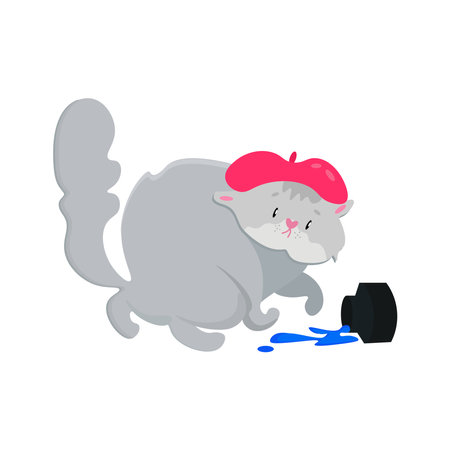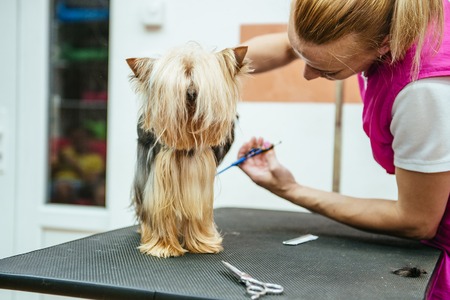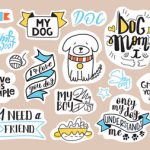Understanding Your Small Pet’s Grooming Needs
Grooming isn’t just for show—it’s a vital part of caring for your small pet’s health and happiness. From fluffy rabbits to curious guinea pigs and playful hamsters, each species has unique grooming needs that go beyond simply keeping them looking cute. Regular grooming helps prevent painful matting, reduces the risk of skin infections, and allows you to check for signs of illness or parasites early on. For example, long-haired guinea pigs may need daily brushing to prevent tangles, while short-haired hamsters might benefit from occasional dust baths. Understanding what’s normal for your pet’s breed and coat type is key to setting up a healthy routine. Ultimately, grooming strengthens your bond with your furry friend while ensuring they stay comfortable, clean, and thriving in your home.
Common Small Pets and Their Grooming Schedules
When it comes to small pets, each species has its own unique grooming needs. Knowing how often to groom your pet is crucial for their health and comfort. Below, we’ll explore the recommended grooming frequencies for some of the most popular small pets in the United States: rabbits, guinea pigs, hamsters, and ferrets.
Understanding Individual Needs
Small pets come in a variety of breeds and fur types. Factors such as coat length, age, and health status can influence how often they need grooming. Regular grooming not only keeps their coat clean but also helps you spot early signs of health issues like skin problems or parasites.
Recommended Grooming Frequencies by Pet Type
| Pet | Brushing | Nail Trimming | Bathing |
|---|---|---|---|
| Rabbits | Short-haired: Weekly Long-haired: Daily to every other day |
Every 4-6 weeks | Rarely (spot clean as needed) |
| Guinea Pigs | Short-haired: Weekly Long-haired: 2-3 times/week |
Every 4-6 weeks | Rarely (only if necessary) |
| Hamsters | Weekly (for long-haired breeds) Minimal for short-haired breeds |
Every 1-2 months (if needed) | Avoid water baths; provide sand baths instead |
| Ferrets | Weekly | Monthly or as needed | Every 1-3 months (not more frequently to avoid skin issues) |
A Closer Look at Each Pet’s Routine
- Rabbits: Long-haired varieties require daily brushing to prevent mats and tangles, while short-haired breeds can usually be groomed weekly. Nail trims are essential every month or so.
- Guinea Pigs: Similar to rabbits, long-haired guinea pigs need more frequent brushing. Keep an eye on their nails and trim regularly to prevent discomfort.
- Hamsters: Most hamsters do not require extensive grooming. Long-haired types benefit from gentle weekly brushing, and all hamsters enjoy sand baths for natural cleaning.
- Ferrets: These energetic pets shed seasonally and should be brushed weekly. Bathe sparingly since frequent bathing can dry out their skin.
No matter what type of small pet you have, establishing a regular grooming schedule tailored to their specific needs will keep them happy and healthy.

3. Signs Your Pet Needs Grooming
Recognizing when your small pet needs grooming is key to keeping them healthy and comfortable. Every animal has unique habits, but there are universal signs that indicate it’s time for a grooming session. By paying attention to both behavioral and physical cues, you can ensure your furry friend always looks and feels their best.
Behavioral Cues
Your pets behavior can be the first sign that they’re overdue for a little TLC. If you notice your small pet scratching or biting themselves more than usual, it might be due to tangled fur, dirt buildup, or skin irritation. Some pets may also become restless or irritable if their coat is uncomfortable. In some cases, you may see them rubbing their bodies against furniture or the floor in an attempt to relieve discomfort caused by mats or excess hair.
Physical Cues
Shedding
While shedding is normal for many small pets, excessive loose fur on their bedding or around your home can signal it’s time for a thorough brushing. Regular grooming helps manage shedding and prevents hair from matting or forming tight knots.
Matting
Matted fur isn’t just unsightly—it can be painful and even lead to skin infections. If you spot clumps of tangled hair, particularly behind the ears, under the legs, or around the tail, schedule a grooming session right away. Mats can tighten quickly and pull on your pet’s skin.
Odor
A strong or unusual odor coming from your pet or their enclosure is another red flag. While all animals have their own scent, a persistent smell often means its time for a bath or a cage cleaning. Odors may result from dirty fur, accumulated oils, or debris stuck in the coat.
Other Physical Signs
Additional indicators include overgrown nails clicking on hard surfaces, watery eyes from untrimmed facial fur, or visible dirt and debris in their coat. Paying attention to these details helps you maintain your small pet’s hygiene and overall well-being.
4. Essential Grooming Tools and Supplies
Choosing the right grooming tools is crucial for your small pet’s health and comfort. Every species—whether it’s a rabbit, guinea pig, hamster, or ferret—has unique grooming needs, so selecting the right supplies will ensure their coat and skin stay in top condition. Here’s a handy guide to must-have grooming products and tips on picking the best ones for your furry friend.
Must-Have Grooming Tools by Pet Type
| Pet Type | Brush/Comb | Nail Clippers | Shampoo (if needed) | Special Considerations |
|---|---|---|---|---|
| Rabbit | Slicker brush, flea comb | Small animal nail clippers | Mild, fragrance-free small animal shampoo | Avoid wetting unless necessary; spot-clean preferred |
| Guinea Pig | Soft-bristle brush, metal comb (for long hair) | Small animal nail clippers | No shampoo unless directed by vet | Groom more often for long-haired breeds |
| Hamster | Toothbrush or soft grooming brush | Nail trimming rarely needed | No shampoo; dry bathing only with sand bath | Avoid water baths entirely |
| Ferret | Slicker brush, flea comb | Cat/ferret nail clippers | Ferret-safe shampoo (occasional use) | Bathe sparingly to avoid dry skin |
How to Choose the Right Grooming Tools for Your Pet’s Needs
- Consider Coat Type: Short-haired pets usually need a soft brush, while long-haired breeds require a combination of brushes and combs to prevent tangles.
- Select Size-Appropriate Tools: Ensure clippers and brushes are designed for small animals to prevent accidental injury.
- Avoid Harsh Chemicals: Always opt for pet-safe, gentle products without strong fragrances or additives.
- Consult Your Vet: If you’re unsure which tools are safe for your pet, ask your veterinarian for recommendations tailored to your pet’s breed and health status.
- Quality Over Quantity: Investing in high-quality tools may save you time and keep your pet more comfortable during grooming sessions.
Your Pet’s Comfort Comes First!
The right grooming tools make all the difference—not just in how effective the process is, but also in keeping your small pet calm and stress-free. By matching supplies to your pet’s unique needs, you’ll make each grooming session a positive experience and help maintain their overall well-being.
5. DIY vs. Professional Grooming: What’s Best for Your Pet?
When it comes to grooming your small pet, you have two main options: handling it yourself at home or seeking help from a professional groomer. Each approach has its own set of advantages and challenges, and the best choice often depends on your pet’s needs, your budget, and your comfort level.
Grooming at Home
Pros
- Cost-effective: DIY grooming can save you money over time, as professional services add up quickly.
- Bonding Opportunity: Regular grooming sessions at home help strengthen the bond between you and your pet.
- Convenience: You can groom your pet on your own schedule without needing to book appointments or travel.
Cons
- Safety Risks: Without proper training, there’s a risk of accidentally injuring your pet, especially when trimming nails or handling delicate areas.
- Limited Tools & Skills: Most pet owners don’t have access to specialized equipment or in-depth knowledge for advanced grooming needs.
- Stress Factors: Some pets may become anxious or uncooperative during at-home grooming, which can make the process stressful for both of you.
Professional Grooming Services
Pros
- Expertise: Professional groomers are trained to handle a wide variety of pets and coat types safely and efficiently.
- Specialized Equipment: Grooming salons use high-quality tools that deliver better results, especially for breeds with specific grooming requirements.
- Health Checks: Pros often spot early signs of skin issues, parasites, or other health concerns during grooming sessions.
Cons
- Higher Cost: Professional services can be expensive, especially if your pet requires frequent visits due to their breed or coat type.
- Scheduling & Travel: You’ll need to coordinate appointments and transport your pet, which can be inconvenient for busy families.
- Anxiety for Pets: Some small animals may feel stressed in unfamiliar environments or around strangers.
Making the Right Choice
The decision between DIY and professional grooming depends on several factors—your pet’s temperament, health needs, and your own confidence with grooming tasks. For routine brushing and basic care, many owners find success at home. However, for more complex needs like haircuts, mat removal, or nail trimming, a professional may be the safest option. Ultimately, consistent grooming—whether at home or with a pro—ensures your small pet stays healthy and comfortable year-round.
6. Tips for Making Grooming Stress-Free and Safe
Grooming your small pet doesn’t have to be a stressful experience—for you or your furry friend. With a little preparation and the right approach, you can make grooming sessions something your pet actually enjoys. Here are some practical tips to keep things positive and safe.
Start Slow and Early
If possible, introduce grooming when your pet is young. Take it slow, letting them sniff brushes and tools before using them. Short, gentle sessions help build trust over time.
Create a Calm Environment
Choose a quiet spot away from loud noises or distractions. Speak in a soothing voice and use gentle movements. For anxious pets, try playing soft music or offering treats to create positive associations with grooming time.
Use the Right Tools
Select grooming tools designed for your pet’s size and coat type. Avoid using human combs or scissors, as these can cause injury. Regularly check tools for sharp edges and cleanliness to prevent accidental cuts or skin irritation.
Watch for Signs of Stress
Pay attention to your pet’s body language. If they seem scared or agitated—such as shaking, hiding, or vocalizing—pause the session. Never force grooming; instead, take breaks and try again later.
Safety Precautions Matter
Always handle your pet gently but securely to prevent sudden jumps or escapes. Keep all cleaning products out of reach, and avoid using any sprays or shampoos not specifically formulated for small pets. If trimming nails or fur, be extra cautious near sensitive areas like ears, eyes, and paws.
Reward Good Behavior
After each grooming session, reward your pet with their favorite treat, cuddle time, or playtime. Positive reinforcement helps build happy memories around grooming and makes future sessions easier for both of you.
By focusing on comfort and safety, you’ll foster a healthy bond with your small pet while keeping them looking and feeling their best!


